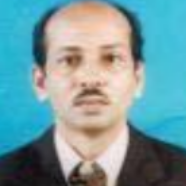International Journal of Computer Network and Information Security (IJCNIS)
IJCNIS Vol. 5, No. 7, 8 Jun. 2013
Cover page and Table of Contents: PDF (size: 389KB)
Adaptive Population Sizing Genetic Algorithm Assisted Maximum Likelihood Detection of OFDM Symbols in the Presence of Nonlinear Distortions
Full Text (PDF, 389KB), PP.58-65
Views: 0 Downloads: 0
Author(s)
Index Terms
Genetic Algorithm, ML estimation, OFDM
Abstract
This paper presents Adaptive Population Sizing Genetic Algorithm (AGA) assisted Maximum Likelihood (ML) estimation of Orthogonal Frequency Division Multiplexing (OFDM) symbols in the presence of Nonlinear Distortions. The proposed algorithm is simulated in MATLAB and compared with existing estimation algorithms such as iterative DAR, decision feedback clipping removal, iteration decoder, Genetic Algorithm (GA) assisted ML estimation and theoretical ML estimation. Simulation results proved that the performance of the proposed AGA assisted ML estimation algorithm is superior compared with the existing estimation algorithms. Further the computational complexity of GA assisted ML estimation increases with increase in number of generations or/and size of population, in the proposed AGA assisted ML estimation algorithm the population size is adaptive and depends on the best fitness. The population size in GA assisted ML estimation is fixed and sufficiently higher size of population is taken to ensure good performance of the algorithm but in proposed AGA assisted ML estimation algorithm the size of population changes as per requirement in an adaptive manner thus reducing the complexity of the algorithm.
Cite This Paper
K. Seshadri Sastry, M.S.Prasad Babu, "Adaptive Population Sizing Genetic Algorithm Assisted Maximum Likelihood Detection of OFDM Symbols in the Presence of Nonlinear Distortions ", International Journal of Computer Network and Information Security(IJCNIS), vol.5, no.7, pp.58-65, 2013. DOI:10.5815/ijcnis.2013.07.07
Reference
[1]Z. W. Zheng, Z. X. Yang, C. Y. Pan, and Y. S. Zhu, "Cutoff Rate andOutage Probability Performance Comparisons Between DVB-T andDMB-T Systems Under Mobile Multipath Channels," IEEE Trans.Broadcasting, Vol. 49, No. 4, 2003, pp. 390-397. DOI:10.1109/TBC.2003.819524
[2]IEEE Std. 802.11a-1999, "Wireless LAN MAC and PHY Specifications High-Speed Physical Layer in the 5 GHz Band," ISO/IEC 8802-11:1999 (E) / Amd 1: 2000 (E), New York: IEEE, 2000.
[3]ETSI, "Broadband radio access networks (BRAN); HIPERLAN Type 2;Physical (PHY) layer", ETSI TS 101475, v1.1.1, April 2000.
[4]E. Costa, M. Midrio, and S. Pupolin, "Impact of nonlinearities on OFDM transmission system performance," IEEE Commun. Lett., vol. 3, no. 2, pp. 37–39, Feb. 1999. DOI: 10.1109/4234.749355
[5]J. Tellado, L. Loo, and J. Cioffi, "Maximum-likelihood detection of nonlinearly distorted multicarrier symbols by iterative decoding," IEEE Trans. Commun., vol. 51, no. 2, pp. 218–227, Feb. 2003. DOI:10.1109/TCOMM.2003.809289
[6]D. Kim and G. L. Stuber, "Clipping noise mitigation for OFDM by decision-aided reconstruction," IEEE Commun. Lett., vol. 3, no. 1, pp. 4–6, Jan. 1999. DOI:10.1109/4234.740112
[7]D. Declercq and G. B. Giannakis, "Recovering clipped OFDM symbols with Bayesian inference," in Proc. IEEE Signal Process. Conf., Istanbul, Turkey, Jun. 2000, vol. 1, pp. 157–160. DOI:10.1109/ICASSP.2000.861898
[8]X. Li and L. J. Cimini, "Effects of clipping and filtering on the performance of OFDM," IEEE Commun. Lett., vol. 2, no. 5, pp. 131–133,May 1998. DOI:10.1109/4234.673657
[9]R. Dinis and A. Gusmão, "A class of nonlinear signal-processing schemes for bandwidth-efficient OFDM transmission with low envelope fluctuations," IEEE Trans. Commun., vol. 52, no. 11, pp.2009–2018, Nov. 2004. DOI:10.1109/TCOMM.2004.836567
[10]Abedi, S., & Tafazoll, R. (2002). Genetically modified multiuser detection for code division multiple access systems. IEEE Journal on Selected Areas in Communications, 20, 463–473,. DOI:10.1109/49.983373
[11]Ergun, C.,&Haciglu, K. (2000).Multiuser detection using a genetic algorithm in CDMAcommunication systems. IEEE Transactions on Communications, 48, 1374–1383. DOI:10.1109/26.864174
[12]Goldberg, D. E. (1989). Genetic algorithm in search, optimization, and machine learning. Addison: Wesley.
[13]Hanzo, L., Yang, L.-L., Kuan, E.-L., & Yen, K. (2003). Single- and multi-carrier DS-CDMA. NewYork: Wiley/IEEE Press.
[14]Sacchi, C., Donelli, M., D'Orazio, L., Fedrizzi, R.,&De Natale, F. G. B. (2007). Genetic algorithm-based MMSE receiver for MC-CDMA systems transmitting over time-varying mobile channels. Electronics Letters, 43, 172–173.
[15]Lain, J.-K., & Lai, J.-J. (2007). Ant colony optimisation-based multiuser detection for direct-sequence CDMA systems with diversity reception. IET Communications, 1, 556–561. DOI:10.1049/iet-com:20050456
[16]Eberhart, R. C., & Shi, Y. (2001). Tracking and optimizing dynamic systems with particle swarms. In Proceedings of IEEE Congress on Evolutionary Computation, Seoul, Korea (pp. 94–97). DOI:10.1109/CEC.2001.934376
[17]Liu, H., & Li, J. (2008). A particle swarm optimization-based multiuser detection for receive-diversityaided STBC systems. IEEE Signal Processing Letter, 15, 29–32. DOI:10.1109/LSP.2007.910315
[18]Ratnaweera, A., Halgamuge, S. K., & Watson, H. C. (2004). Self-organizing hierarchical particle swarm optimizer with time-varying acceleration coefficients. IEEE Transactions on Evolutionary Computation,8, 240–255. DOI:10.1109/TEVC.2004.826071
[19]Soo, K. K., Siu, Y. M., Chan, W. S., Yang, L., & Chen, R. S. (2007). Particle-swarm-optimization based multiuser detection for CDMA communication. IEEE Transactions on Vehicular Technology, 56,3006–3013. DOI:10.1109/TVT.2007.900383
[20]Soo, S. H., & Rao, S. S. (2000). Annealed neural network based multiuser detector in code division multiple access communications. IET Communnications, 47, 57–62. DOI: 10.1049/ip-com:20000228
[21]Fernando G. Lobo1 and Cl´audio F. Lima "Adaptive Population Sizing Schemes in Genetic Algorithms", Studies in Computational Intelligence (SCI), 185–204 , 2007 DOI:10.1007/978-3-540-69432-8_9
[22]A. Gusmão and R. Dinis, "Iterative receiver techniques for cancellation of deliberate nonlinear distortion in OFDM-type transmission," in Proc. IEEE Int. OFDM Workshop, Dresden, Germany, Sep. 2004.
[23]Claudio Sacchi , Massimo Donelli and Francesco G. B. De Natale "Genetic-Algorithm-Assisted Maximum-Likelihood Detection of OFDM Symbols in the Presence of Nonlinear Distortions" IEEE Transactions On Communications, VOL. 55, NO. 5, MAY 2007, pp. 854-859. DOI:10.1109/TCOMM.2007.896126
[24]H. Ochiai, "Performance of optimal and suboptimal detection for uncoded OFDM systems with deliberate clipping and filtering," in Proc. IEEE GLOBECOM Conf., San Francisco, CA, Dec. 2003, vol. 3, pp. 1618–1622. DOI:10.1109/TCOMM.2010.083110.09296
[25]Jiang, M., Ng, S.X., Hanzo, L., 2006. Hybrid iterative multiuser detection for channel coded space division multiple access OFDM systems. IEEE Trans. Veh. Technol., 55(1):115-127. [doi:10.1109/TVT.2005.861187].
[26]V. A. Valk´o "Self-calibrating Evolutionary Algorithms: Adaptive Population Size." Master's thesis, Free University Amsterdam, 2003.
[27]Yang, L.-L., & Hanzo, L. (2003). Multicarrier CDMA systems a multiple access scheme for ubiquitous broadband wireless communication. IEEE Communications Magazine, 41, 116–124. DOI:10.1109/MCOM.2003.1235603
[28]Ho-Lung Hung • Jyh-HorngWen,"An Adaptive Multistage Multiuser Detector for MC-CDMA Communication Systems Using Evolutionary Computation Technique", vol 53, 2010, wireless personal communications, pp.613-633. DOI:10.1007/s11277-009-9722-3
[29]Lee, S.-H., Hung, H.-L., Huang, Y.-F., &Wen, J.-H. (2009). Performance analysis of PSO-based parallel interference canceller for MC-CDMA communication systems. European Transactions on Telecommunications,20(3), 287–297. DOI: 10.1002/ett.1313
[30]Krusienski, D. J., & Jenkins, W. K. (2005). Design and perform ance of adaptive systems based on structured stochastic optimization strategies. IEEE Circuits and Systems Magazine, 5(1), 8–20. DOI:10.1109/MCAS.2005.1405897
[31]H. Ochiai, "Performance of optimal and suboptimal detection for uncoded OFDM systems with deliberate clipping and filtering," in Proc. IEEE GLOBECOM Conf., San Francisco, CA, Dec. 2003, vol. 3, pp. 1618–1622. DOI:10.1109/GLOCOM.2003.1258511
[32]K.Seshadri Sastry, Prasad Babu M.S. (2012), "Non Data Aided SNR Estimation for OFDM Signals in Frequency Selective Fading Channels" Springer journal of Wireless Personal Communications, DOI 10.1007/s11277-012-0686-3, June 2012,. DOI:10.1007/s11277-012-0686-3
[33]2. *Seshadri Sastry.K, Prasad Babu .M.S (2012) "Secant Method Based ML Estimation of Carrier Frequency Offset in OFDM System", International Journal of Computer Science and information Security, ISSN 1947-5500, April 2012, Vol 10(4), pp 125-128.
[34]K.Seshadri Sastry.K, Prasad Babu .M.S (2010), " SNR Estimation for QAM Signals Using Fuzzy Logic Interface", IEEE ICCSIT 2010, July 2010, pp 413- 416 DOI:10.1109/ICCSIT.2010.5564920
[35]C. Rapp, "Effects of HPA-nonlinearity on a 4-DPSK/OFDM-signal for a digital sound broadcasting system," in Proc. 2nd Eur. Conf. Satellite Commun., Liege, Belgium, Oct. 1991, pp. 179–184.
[36]K.Seshadri Sastry.K, Prasad Babu .M.S (2010)," AI Based Digital Companding Scheme for Software Defined Radio" IEEE ICSESS , 2010, pp 417- 419 DOI:10.1109/ICCSIT.2010.5563877

